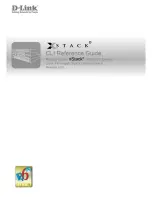
QSW-6300 Series Switches Hardware Installation and Reference Guide
Preparing for Installation
26
In an environment with high relative humidity, the insulating material may have poor
insulation or even leak electricity.
In an environment with low relative humidity, the insulating strip may dry and shrink,
loosening screws.
In a dry environment, static electricity is prone to occur and damage the internal circuits
of the switch.
Too high temperatures can accelerate the aging of insulation materials, greatly reducing
the reliability of the switch and severely affecting its service life.
Temperature and humidity requirements of the QSW-6300 series are as follows:
Temperature
Relative Humidity
0ºC to 45ºC (32°F to 113°F)
10% to 90% (non-condensing)
Note:
The working temperature and humidity are measured 1.5 m above the ground and 0.4 m away
from the front plat and when the chassis’ front and rear protective plates are removed. The
ambient temperature and humidity of the switch are measured at the point that is 1.5 m (59.06
in.) above the floor and 0.4 m (15.75 in.) before the switch rack when there is no protective
plate in front or at the back of the rack.
2.2.3. Cleanliness Requirements
Dust poses a major threat to the switch. The indoor dust takes on a positive or negative static
electric charge when falling on the switch, causing poor contact of the metallic joint. Such
electrostatic adhesion may occur more easily when the relative humidity is low, not only affecting
the service life of the switch, but also causing communication faults. The following table describes
the requirements for the dust content and granularity in the equipment room.
Min Dust Diameter (μm)
0.5
5
Dust Particle
(Particles/m
3
)
≤ 3.5x10
6
≤ 3x10
4
Apart from dust, the salt, acid, and sulfide in the air in the equipment room must meet strict
requirements. These harmful substances will accelerate metal corrosion and component aging.
Therefore, the equipment room should be properly protected against the intrusion of harmful
gases, such as sulfur dioxide, hydrogen sulfide, nitrogen dioxide, and chlorine gas. The following
table lists limit values for harmful gases.
Gas
Average (mg/m
3
)
Maximum (mg/m
3
)
Sulfur dioxide (SO
2
)
0.3
1.0
Hydrogen sulfide (H
2
S)
0.1
0.5
Nitrogen dioxide (NO
2
)
0.5
1.0
Chlorine gas (CI
2
)
0.1
0.3
2.2.4. Grounding Requirements
A good grounding system is the basis for stable and reliable running of the QSW-6300 series
and is indispensable for preventing lightning strikes and interference. Please carefully check the
















































